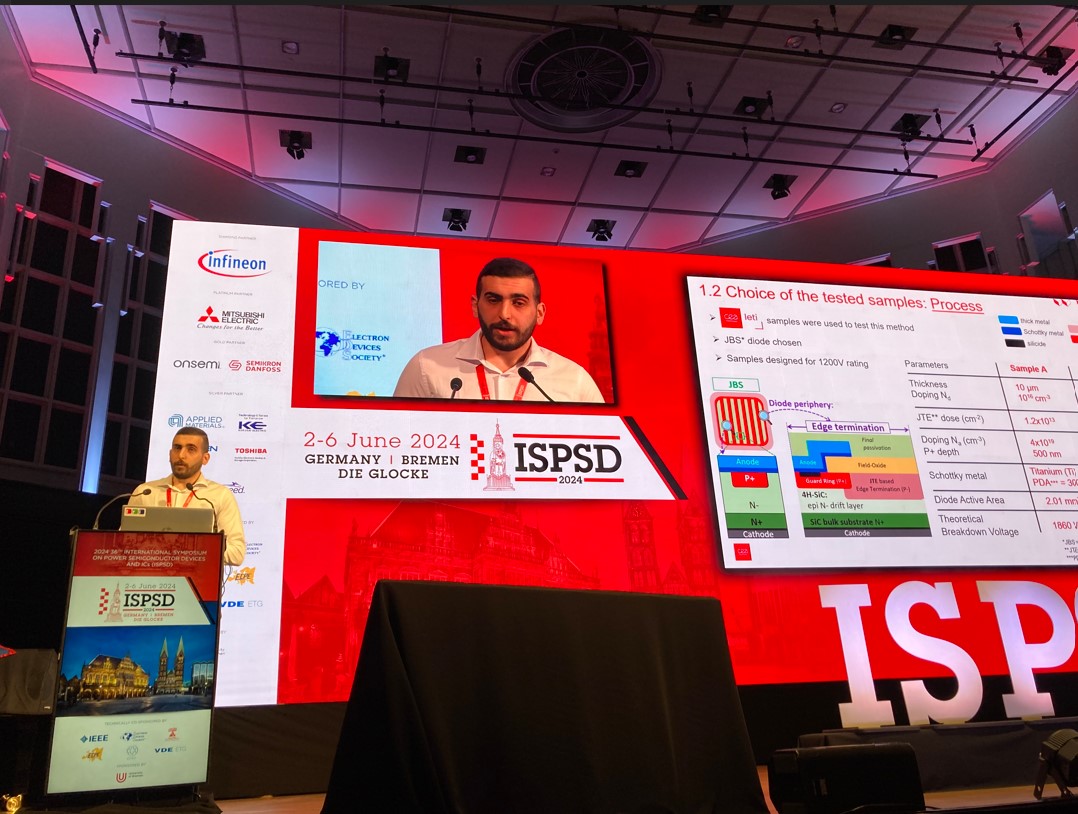This year marked the 36th edition of ISPSD (International Symposium on Power Semiconductor Devices and ICs). It was held in Bremen, Germany. As always, the conference attracted a large number of submissions from researchers around the world, with only 12% being selected for oral presentations. Among those chosen was a publication from CEA-Leti, led by PhD student Ahmad Abbas and his research work that focuses on SiC devices.
A non-destructive method for sic wafer characterization
The selected paper presents an innovative method for characterizing SiC diodes and their design in order to assess their stability and robustness. Specifically, the aim was to determine—for two types of diode technology—the variation in avalanche voltage and reverse leakage current before and after the application of avalanche stress.
“There are other characterization methods for power components," explains Ahmad Abbas. “Our method doesn't seek to compete with them but rather to complement the information they provide through avalanche effect analysis, carried out directly on wafers." This marks a significant difference, as conventional methods typically focus more on component reliability studies within packages. Moreover, the research team's process stands out for its non-destructive approach.
Such insights are invaluable, for instance, when optimizing the design of a component during the R&D phase or when controlling the performance of a device once produced. The researchers are now looking to expand the application scope of this innovative method. “We will continue our work to improve the results we've achieved," announces Ahmad Abbas. “We also plan to apply our method to other devices (MOSFETs) and materials (GaN components)."
SiC part of an intense global competition for electrification technologies
Since its creation in 1988, ISPSD has gathered the scientific, technological and industrial communities to address issues related to power semiconductor devices. “This is a globally renowned symposium on these topics," states Yann Lamy, head of the power semiconductor components lab at CEA-Leti. “The topics discussed are of critical importance due to the growing demand for electrification—electric vehicles, trams, industrial equipment, etc. as well as converters for renewable energy (wind, solar...)."
The conference's selection of Ahmad Abbas's publication is a testament to the quality of the research conducted. It is also a notable achievement, as significantly fewer papers from European laboratories are accepted at ISPSD as compared to those from the United States, China or Japan.
This success underscores CEA-Leti's research strategy around SiC technology. “In 2019, we partnered with Soitec to launch a major program on SmartSiCTM substrates, which led to the creation of a new factory dedicated to this technology," recalls Yann Lamy. “And starting in 2021, we initiated another large-scale project on SiC devices, which is now earning recognition thanks to this presentation at ISPSD."

Ahmad Abbas's presentation at the ISPSD 2024 Conferences - Bremen, Germany.